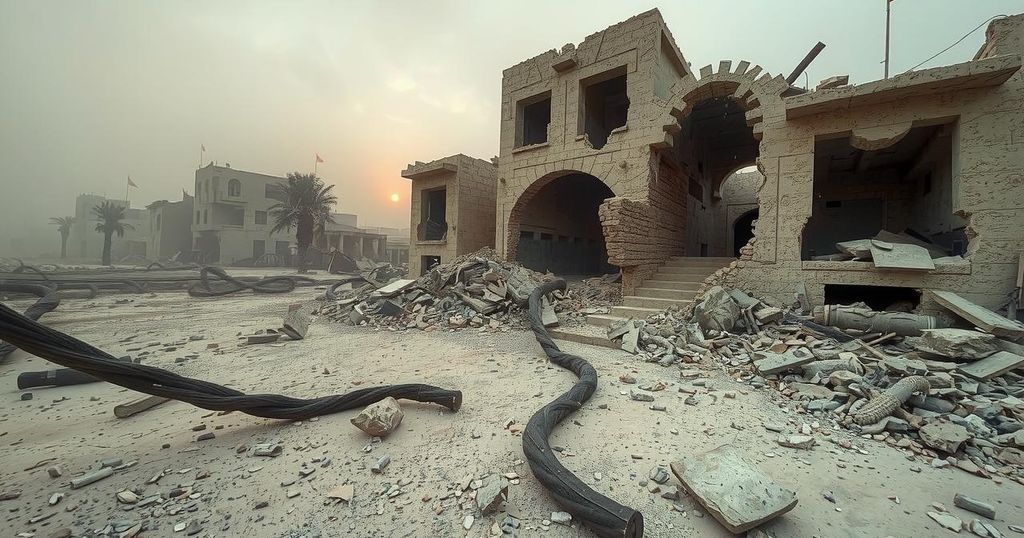Tension in Ethiopia’s Somali Region is escalating as the ONLF warns of potential insurgency due to unmet promises from the 2018 peace agreement with the federal government. Historical grievances over exploitation and neglect, alongside recent centralization tactics, have resurfaced the group’s original motivations for resistance. To avert further conflict, Addis Abeba must implement the peace accord genuinely, address corruption, and promote regional autonomy and political inclusion.
The situation in Ethiopia’s Somali Regional State is precarious as tensions rise between the Ogaden National Liberation Front (ONLF) and the federal government due to unmet promises from the 2018 peace agreement. ONLF Chairman Abdirahman Sheikh Mahdi has indicated a potential return to armed resistance, citing federal breaches of autonomy and ongoing resource disputes as catalysts. The Somali region suffers from systemic neglect, corruption, and violent suppressions of dissent, creating a fertile ground for unrest.
Historically, the ONLF emerged in 1984 due to Ethiopia’s oppression of Somali self-determination, particularly following the 1977-1978 Ogaden War. For over thirty years, the ONLF fought against the exploitation of the Ogaden Basin’s resources, leading to displacement and atrocities against the Somali population. Despite holding significant natural gas reserves, the Somali region remains one of the most marginalized areas in Ethiopia.
The 2018 Asmara peace agreement briefly stabilized relations, promising political legitimacy and reintegration for ONLF fighters, yet federal neglect has thwarted these efforts. Less than ten percent of ex-combatants were reintegrated, and central government policies have revived grievances over marginalization and the denial of self-determination.
Under the Prosperity Party, centralization has exacerbated issues in the Somali region, particularly under Mustafa Omar’s administration, criticized for corruption and repression. Reports highlight misappropriation of funds meant for vital projects, leaving communities in dire need. Such conditions have ignited discontent and disillusionment with the government, undermining the spirit of the initial peace agreement.
As the government employs strategies of co-optation, the ONLF has maintained grassroots support despite attempts to weaken it by creating rival factions. This has been compounded by increasingly aggressive rhetoric from Ethiopian officials, framing the ONLF as an enemy of the state and withdrawing from inclusive political dialogues.
Youth-led movements in cities like Kebri Dehar and Jigjiga illustrate the ONLF’s resurgence amid systemic corruption and mismanagement, utilizing social media for advocacy. Additionally, the diaspora in regions such as Toronto and Minneapolis provides essential support, bringing international attention to their cause. The ONLF’s evolving strategy reflects a commitment to addressing historical grievances through grassroots mobilization rather than solely military means.
To avert renewed conflict, it is crucial for Addis Abeba to implement the 2018 peace deal genuinely. The ONLF’s demands highlight the need for transparency, regional autonomy, and an end to corruption. Trust has eroded, and without tangible actions, skepticism about the federal government is likely to deepen.
Prime Minister Abiy Ahmed’s administration faces an urgent challenge as ethnic tensions surge amid other civil conflicts within the country. Ignoring the situation in the Somali region could have detrimental effects on regional stability and fuel opportunistic actions from extremist groups. As Chairman Mahdi states, patience is waning; a shift towards inclusive dialogue is essential to prevent the resurgence of violence.
To ensure Ethiopia’s stability, the federal government must confront exclusionary policies entrenched by the Prosperity Party, encouraging a broader reconciliation framework. Addressing the Somali population’s grievances is vital for healing and preventing the repetition of past conflicts that stemmed from neglect and miscalculations in handling ethnic diversity.
In summary, the ongoing tensions between the ONLF and the federal government underscore the fragility of peace in Ethiopia’s Somali Region. The historical context of grievances, compounded by current political centralization and corruption, poses significant risks for renewed conflict. The path forward requires genuine engagement from the federal government, addressing corruption and promoting regional autonomy to restore trust and stability. Without decisive action, Ethiopia may face a resurgence of violence driven by deep-seated divisions and unmet demands.
Original Source: addisstandard.com




